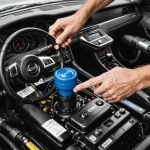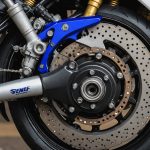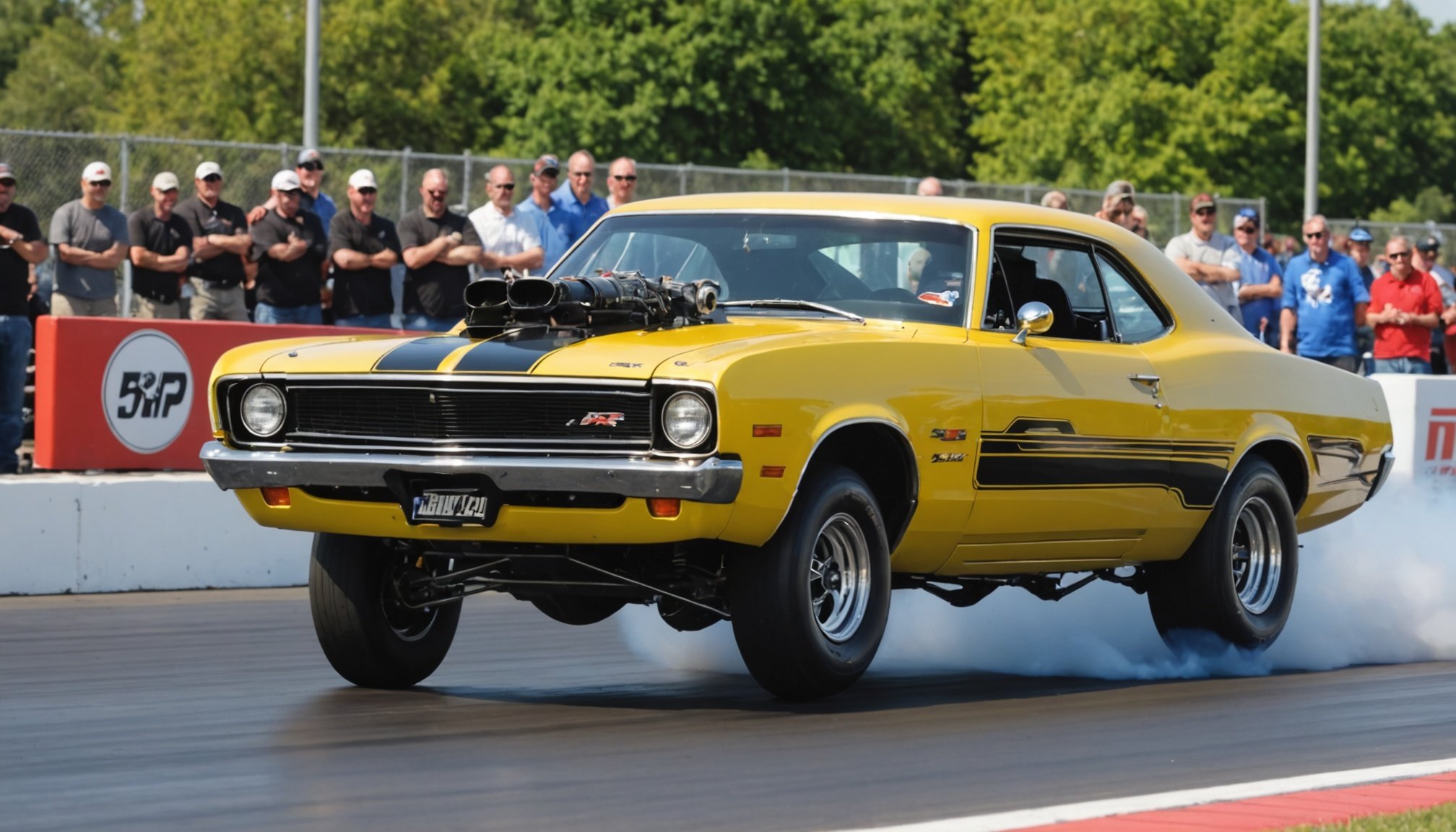Unlocking Drag Racing Success: Pro Strategies to Perfect Your UK Car’s Suspension Tune
Understanding the Importance of Suspension in Drag Racing
When it comes to drag racing, every component of your car plays a crucial role in achieving that perfect run. However, one of the most critical and often overlooked aspects is the suspension tune. A well-tuned suspension can make the difference between a winning run and a disappointing one. Here’s why it’s so important and how you can perfect it for your UK car.
The Role of Suspension in Drag Racing
In drag racing, the suspension is not just about comfort and stability; it’s about optimizing the car’s performance at high speeds. A properly tuned suspension ensures that your car maintains consistent contact with the track surface, which is vital for traction and acceleration.
Topic to read : Essential tips for maintaining a fog-free interior in your uk car on rainy days
“Properly tuned suspension systems contribute to driver comfort and safety. By maintaining consistent contact with the track surface, tuned suspensions minimize disruptions and maintain control, mitigating the risks associated with unpredictable movements,” explains an expert from the world of high-performance go-karts, a field that shares many principles with drag racing[1].
Key Components of a Suspension Tune
To perfect your car’s suspension tune, you need to focus on several key components.
Have you seen this : Transform your uk vehicle: the ultimate handbook for installing adaptive lighting solutions
Spring Rates and Damping Settings
-
Spring Rates: The spring rates determine how much the suspension compresses under load. For drag racing, you want springs that are stiff enough to handle the launch but not so stiff that they lose traction. “Appropriate spring rates absorb impacts and maintain contact with the track surface, mitigating harsh jolts that can destabilize the vehicle,” notes a specialist in suspension tuning[1].
-
Damping Settings: Damping controls the responsiveness and rebound of the suspension. Proper damping settings allow for precise control and consistent handling during acceleration, braking, and the transition from the launch to the top end of the track.
Suspension Geometry
- Geometry Adjustments: Adjustments to the suspension geometry, such as the angles and alignments of components, can modify the vehicle’s center of gravity. This is crucial in drag racing as it affects how the car handles under acceleration and braking.
“Adjustments to suspension geometry can alter the vehicle’s trajectory and reaction to inputs. Experienced racers and enthusiasts meticulously fine-tune these elements to match track characteristics and personal driving styles,” advises a veteran drag racer.
Step-by-Step Guide to Tuning Your Suspension
Here’s a step-by-step guide to help you tune your car’s suspension for optimal drag racing performance:
Step 1: Assess Your Current Setup
Before making any changes, it’s essential to understand your current suspension setup. Take your car to a track or a dyno and gather data on how it performs under different conditions.
Step 2: Choose the Right Springs
Select springs that are appropriate for your car’s weight and the type of racing you’re doing. Here’s a list of factors to consider when choosing springs:
- Weight of the Vehicle: Lighter cars need softer springs, while heavier cars need stiffer springs.
- Track Conditions: Different tracks require different spring rates. For example, a track with a lot of bumps might require softer springs to maintain traction.
- Driving Style: Your driving style can also influence the spring rates. Aggressive drivers might prefer stiffer springs for better control.
Step 3: Adjust Damping Settings
Damping settings are critical for controlling the rebound and compression of the suspension. Here are some tips for adjusting damping settings:
- Rebound Damping: Higher rebound damping helps control the suspension’s rebound after compression, which is crucial for maintaining traction during the launch.
- Compression Damping: Lower compression damping allows the suspension to compress more easily, which helps in absorbing bumps and maintaining contact with the track.
Step 4: Fine-Tune Suspension Geometry
Adjusting the suspension geometry can significantly impact your car’s performance. Here are some key adjustments to consider:
- Camber: Adjusting the camber can improve the car’s stability and traction. A slight negative camber can help in maintaining contact with the track.
- Toe: The toe setting affects the car’s stability during acceleration and braking. A slight toe-in can help in improving traction.
- Ride Height: The ride height affects the car’s center of gravity and stability. Lowering the ride height can improve stability but may compromise ground clearance.
Tools and Technology for Suspension Tuning
Using the right tools and technology can make a significant difference in your suspension tuning process.
Intercomp Scales
Intercomp scales are a valuable tool for any serious drag racer. These scales help in adjusting the vehicle’s center of gravity, which is crucial for optimal performance.
“The position of the center of gravity (C.G.) is very important in determining the balance of the car. C.G. has many impacts on how a car handles. Bottom line, the better a car handles, the faster the car will roll and carry speed,” explains Chris Zins, Intercomp Director of Racing Sales and Service[2].
Data Analysis Software
Data analysis software can help you understand how your car is performing and where improvements can be made. Here’s a comparison of some popular data analysis tools:
| Tool | Features | Cost |
|---|---|---|
| High Performance Academy Software | Detailed data analysis, real-time monitoring, customizable dashboards | Subscription-based |
| Intercomp Data Logger | Real-time weight distribution, center of gravity analysis, data logging | One-time purchase |
| 5 Star Tuning Software | Engine performance analysis, transmission tuning, real-time monitoring | Included with tuning services |
Practical Insights and Actionable Advice
Here are some practical insights and actionable advice to help you perfect your car’s suspension tune:
Start with Small Adjustments
When tuning your suspension, start with small adjustments and test them on the track. This will help you understand how each adjustment affects your car’s performance.
Use Real-Time Data
Use real-time data to monitor your car’s performance and make adjustments accordingly. This can help you identify issues quickly and make necessary changes.
Consult with Experts
Consulting with experienced drag racers and suspension specialists can provide valuable insights and help you avoid common mistakes.
Test and Retest
Testing and retesting your suspension setup is crucial. Every track is different, and what works on one track may not work on another.
Real-World Examples and Anecdotes
Here are a few real-world examples and anecdotes that highlight the importance of suspension tuning in drag racing:
The Story of a Winning Run
During the Eurodragster.com Festival of Power at Santa Pod, a UK drag racing team made a crucial adjustment to their suspension setup that resulted in a winning run. By fine-tuning the spring rates and damping settings, they were able to improve their car’s traction and stability, leading to a significant reduction in their ET (elapsed time).
The Importance of Data Analysis
A drag racing team using High Performance Academy software discovered that their car was experiencing significant weight transfer during the launch. By analyzing the data, they were able to adjust their suspension geometry and improve their car’s stability, resulting in faster runs.
Perfecting your car’s suspension tune is a complex but rewarding process. By understanding the key components of suspension tuning, using the right tools and technology, and following practical insights and actionable advice, you can significantly improve your car’s performance on the track.
Remember, drag racing is as much about the physics of the car as it is about the driver’s skills. Taking the time to fine-tune your suspension can make all the difference between a good run and a great one. So, the next time you’re at the pit lane preparing for a race, make sure to give your suspension the attention it deserves. It could be the key to your next win at the Santa Pod or any other drag racing event.











